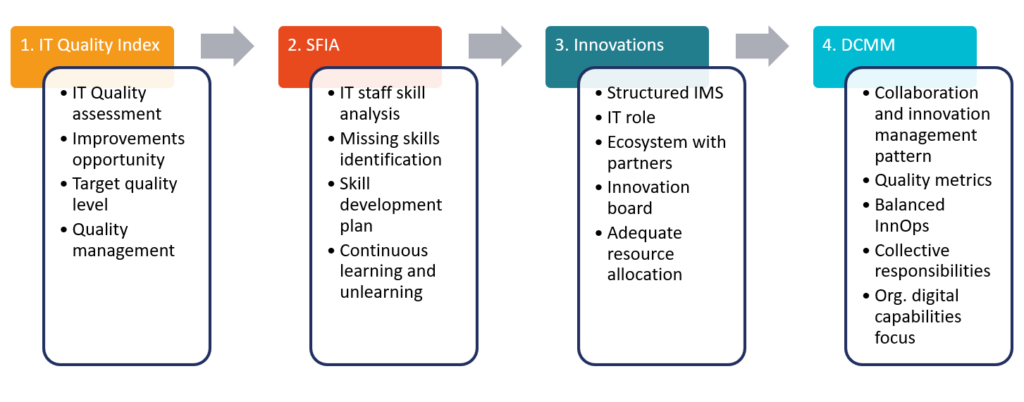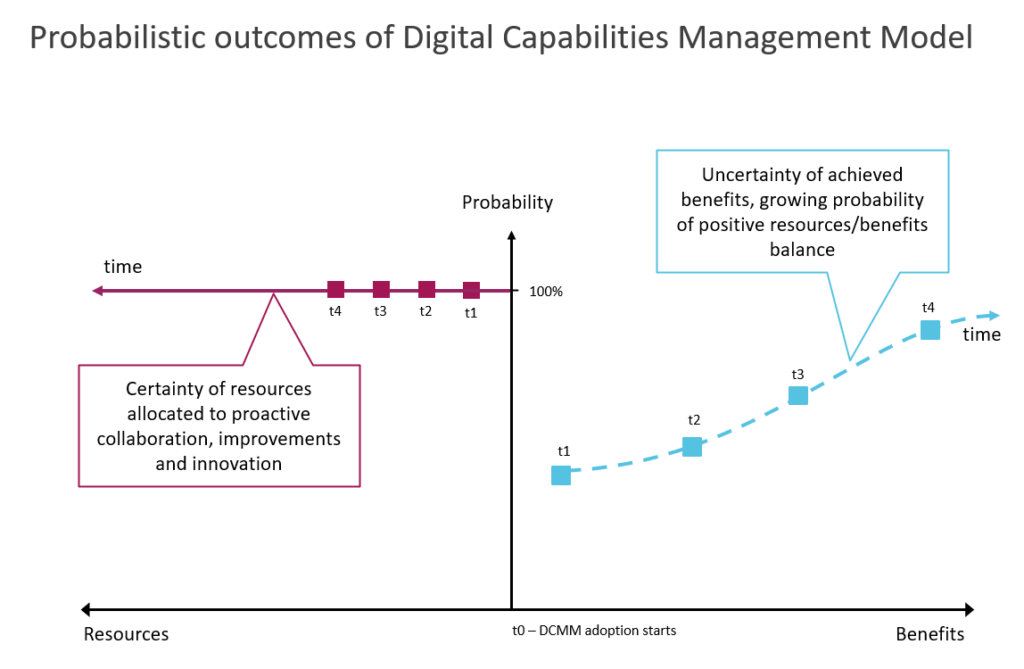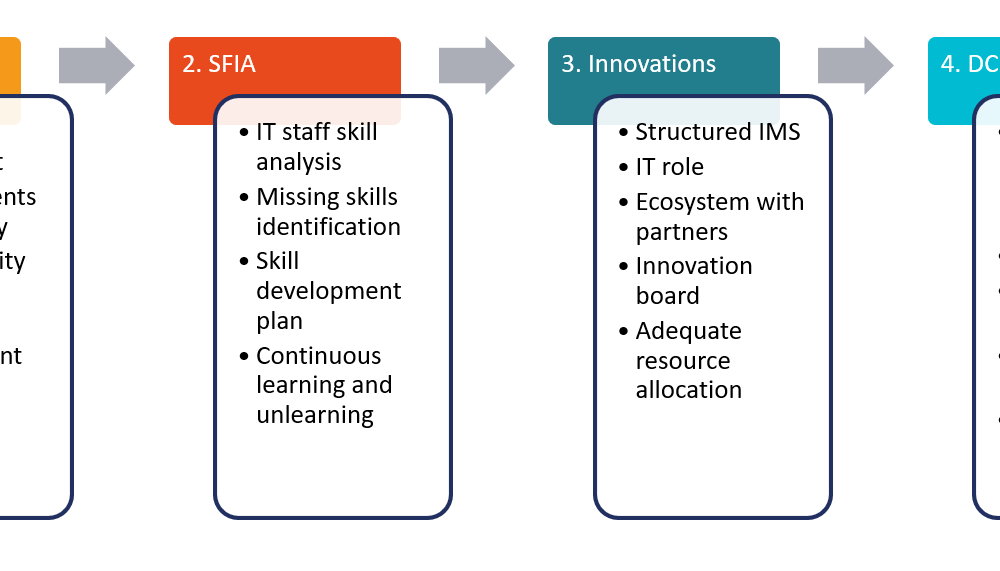Is the phenomenon of digital transformation only about business or is it a structural change, including a change in the role and functioning of IT?
A growing proportion of CIOs understand that entering the knowledge era and knowledge economy requires redefining the IT role in organizations – from a reactive service or product provider to a competence center that can co-identify and adopt new technologies that will enhance the digital capabilities of the entire organization.
Achieving this change can be realized, for example, by these four steps and the path that many CIOs and their IT departments are following
- IT Quality Index – the aim of this step is to determine the objective state of IT quality by analyzing 48 qualitative dimensions, identifying areas that are useful to further develop and also identifying dimensions where further efforts are not effective.
- SFIA (Skills Framework for the information age) – structured analysis of IT skills (skills assessment), at what level and extent they are represented in the IT team and also which skills are missing or not sufficiently developed.
- Innovation – a chaotic approach to innovation will turn into a structured system (Innovation management system), allowing the identification of interesting innovation opportunities through cooperation with key users, suppliers, partners and specialized experts.The role of IT in innovation efforts is agreed with the company’s management, including the allocation of adequate resources
- DCMM – Digital capabilities management model – allows you to change the structure and format of work in IT with an emphasis on more proactive and collaborative IT work.This model also supports collaboration between people and complex AI systems (for example, AI – digital intelligent agent).

These steps are not a complete and all-encompassing transformation plan, but they do provide CIOs with guidance that can be taken as inspiration for inclusion in the next steps that take place in each organization. The specific output is IT, which:
– Collaborate better across businesses
– Inspires new innovations for digital capabilities
– It moves away from quantitative to qualitative management
– Allocates multiple resources for innovation, complex integration into complex data and innovation ecosystems
– It supports proactive IT work and the ability to positively influence the future of the organization.
Using the DCMM model requires accepting that complex creative work such as innovation does not guarantee a return on invested resources. A necessary condition is therefore the support of top management in accepting the uncertainty of achieving the goals of IT transformation as well as managing IT as a competence center.

